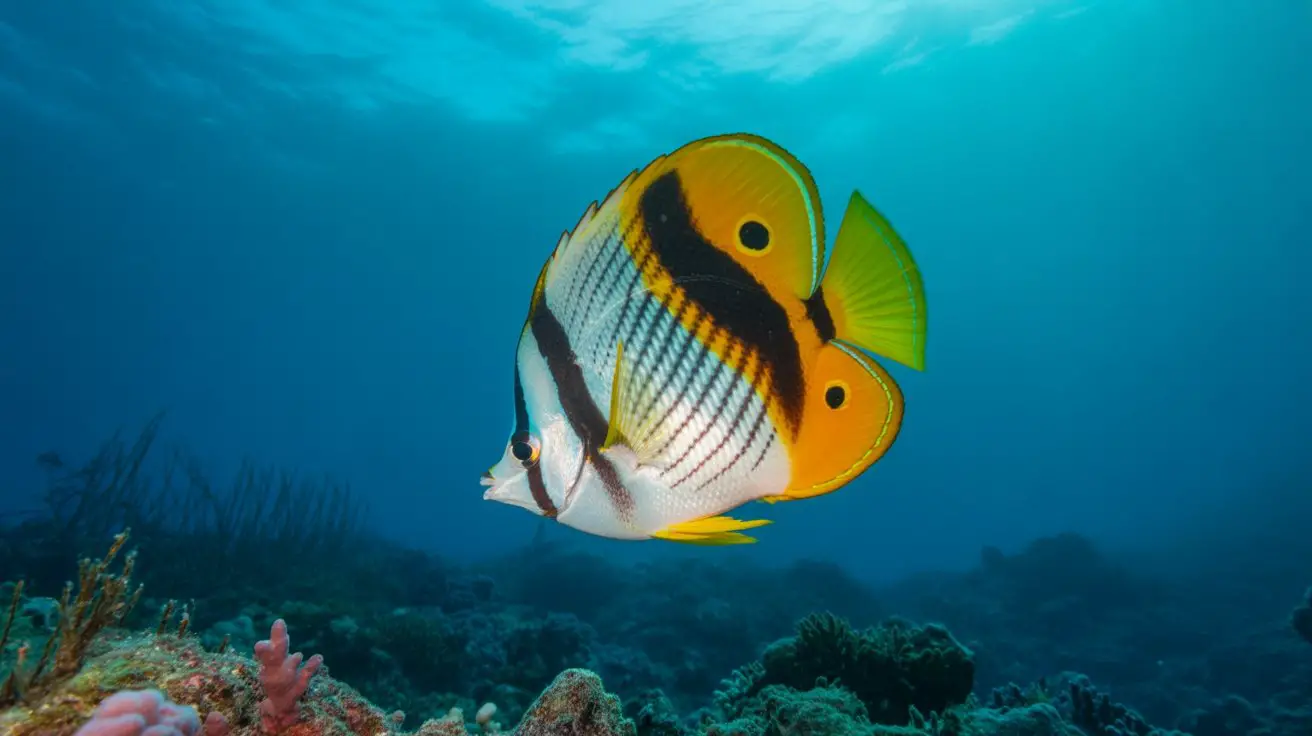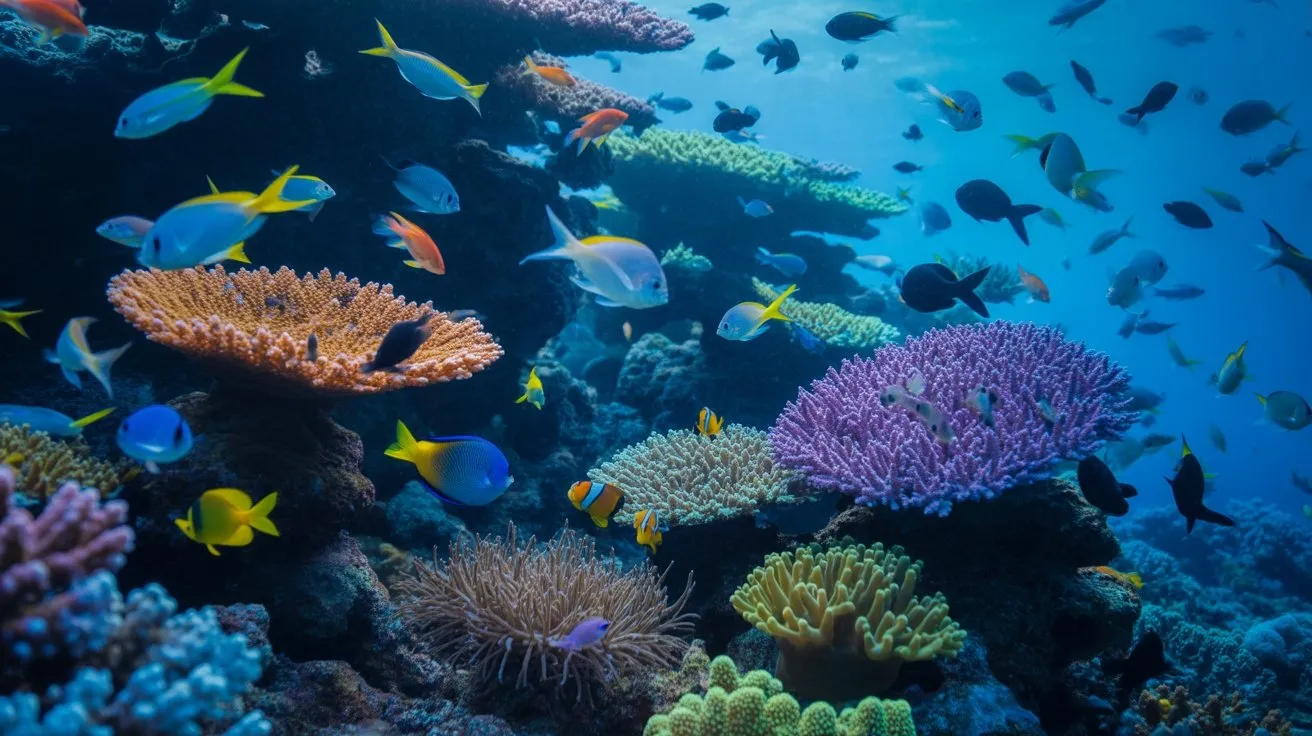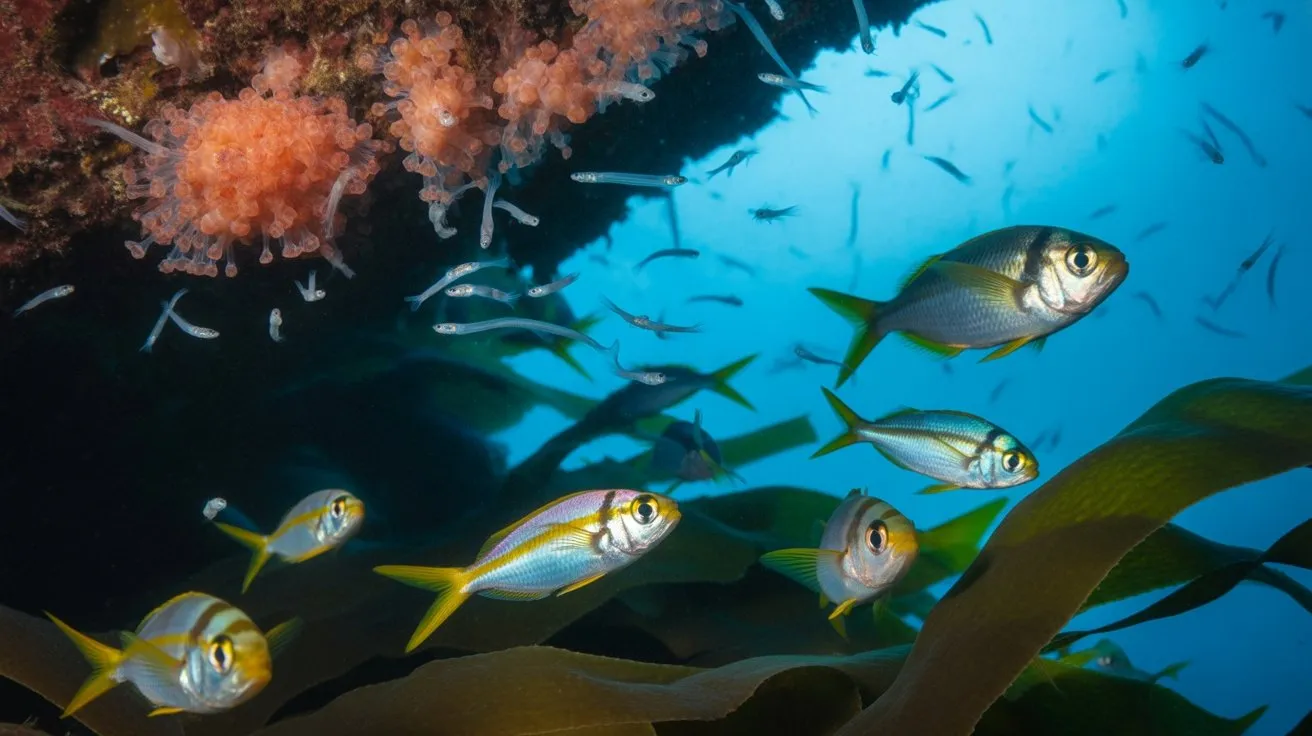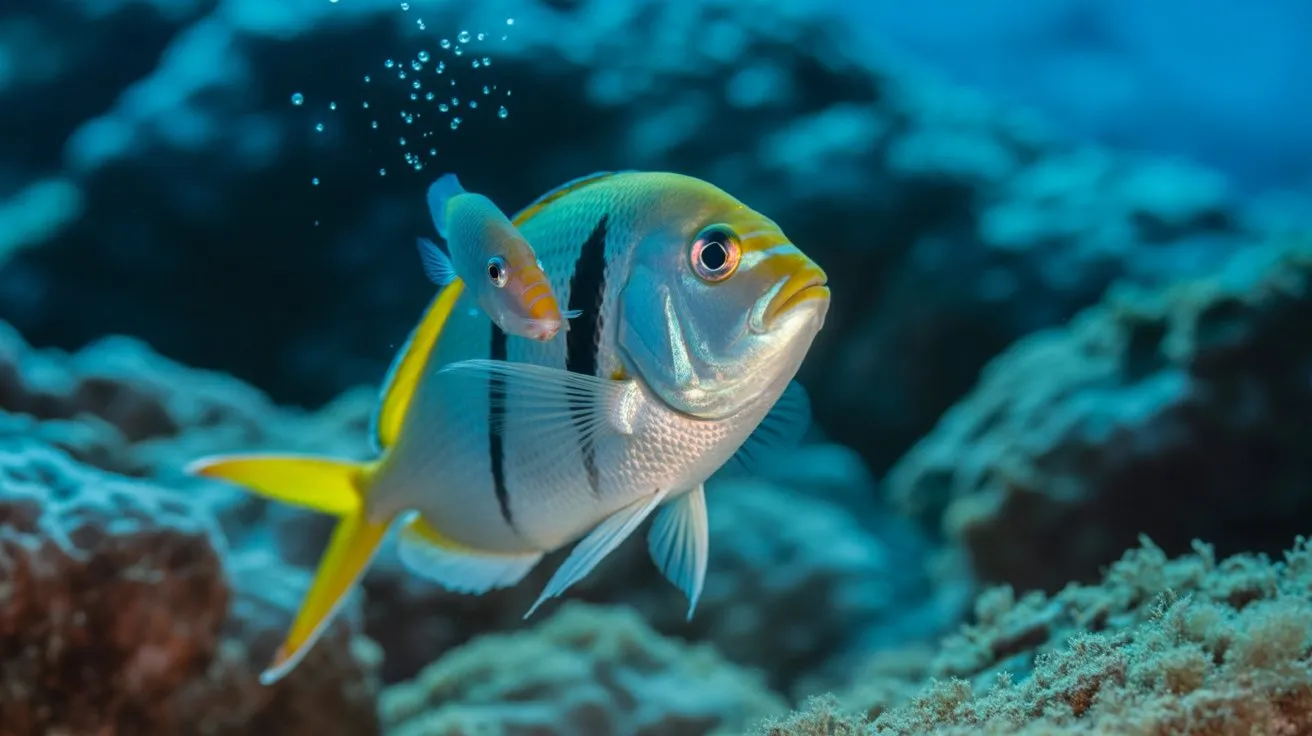You’re gliding through crystal-clear tropical waters when a flash of electric yellow catches your eye—a Chaetodontidae specimen maneuvering the coral labyrinth with surgical precision. You’ll find over 130 documented butterflyfish species exhibiting specialized morphological adaptations, from their compressed lateral profiles to elongated rostrums designed for extracting prey from coral crevices. Their intricate behavioral patterns and ecosystem dependencies reveal complexities that challenge current marine conservation strategies, while recent population data suggests these indicator species face unprecedented pressures.
Physical Characteristics and Distinctive Features
Butterflyfish exhibit remarkable morphological adaptations that distinguish them from other reef fish families.
You’ll observe their laterally compressed bodies reaching 12-22 centimeters in standard length, with disc-shaped profiles optimized for maneuverability through coral formations. Their protrusible mouths contain brush-like teeth specifically adapted for extracting polyps from coral crevices.
You’ll notice distinctive ocelli (false eyespots) positioned near posterior regions, serving as predator deterrents through misdirection tactics.
Chaetodontidae species display vibrant coloration patterns—vertical bands, chevrons, and spots—that provide both species recognition and camouflage benefits.
Their continuous dorsal fins contain 6-16 spines, while anal fins possess 3-5 spines.
You’ll find their caudal fins are typically rounded or truncate, facilitating precise directional changes within complex reef environments.
Species Diversity and Classification
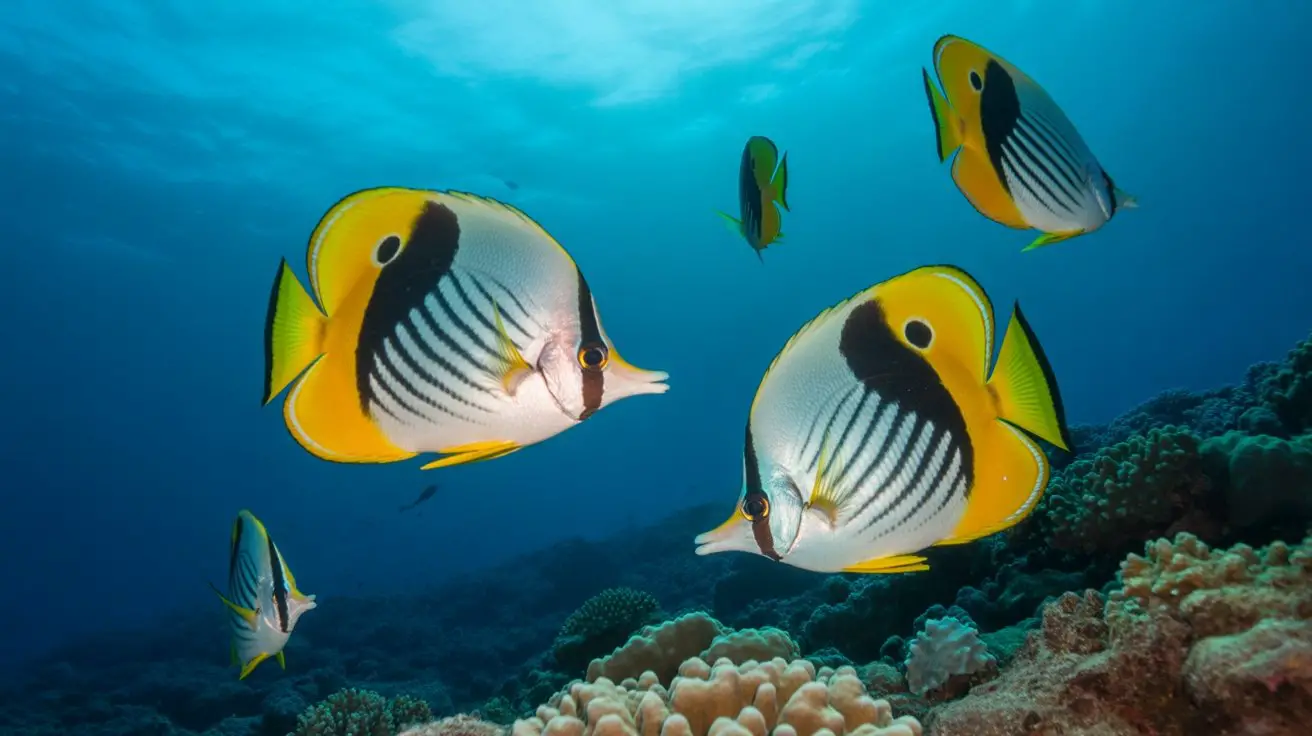
Within the family Chaetodontidae, you’ll encounter approximately 129 recognized species distributed across 12 genera, with Chaetodon representing the most speciose genus containing over 90 species. You’ll find these fish classified into distinct subgenera based on morphological characteristics and phylogenetic relationships.
| Genus | Species Count | Distribution | Notable Features |
|---|---|---|---|
| Chaetodon | 90+ | Indo-Pacific, Atlantic | Diverse feeding strategies |
| Forcipiger | 3 | Indo-Pacific | Elongated snouts |
| Heniochus | 8 | Indo-Pacific | Pennant-like dorsal fins |
| Parachaetodon | 1 | Western Pacific | Primitive characteristics |
When you’re examining taxonomic diversity, you’ll notice species clustering around coral reef biodiversity hotspots. The Indo-Pacific region harbors 85% of all butterflyfish species, while Atlantic populations contain fewer endemic forms.
Natural Habitat and Geographic Distribution
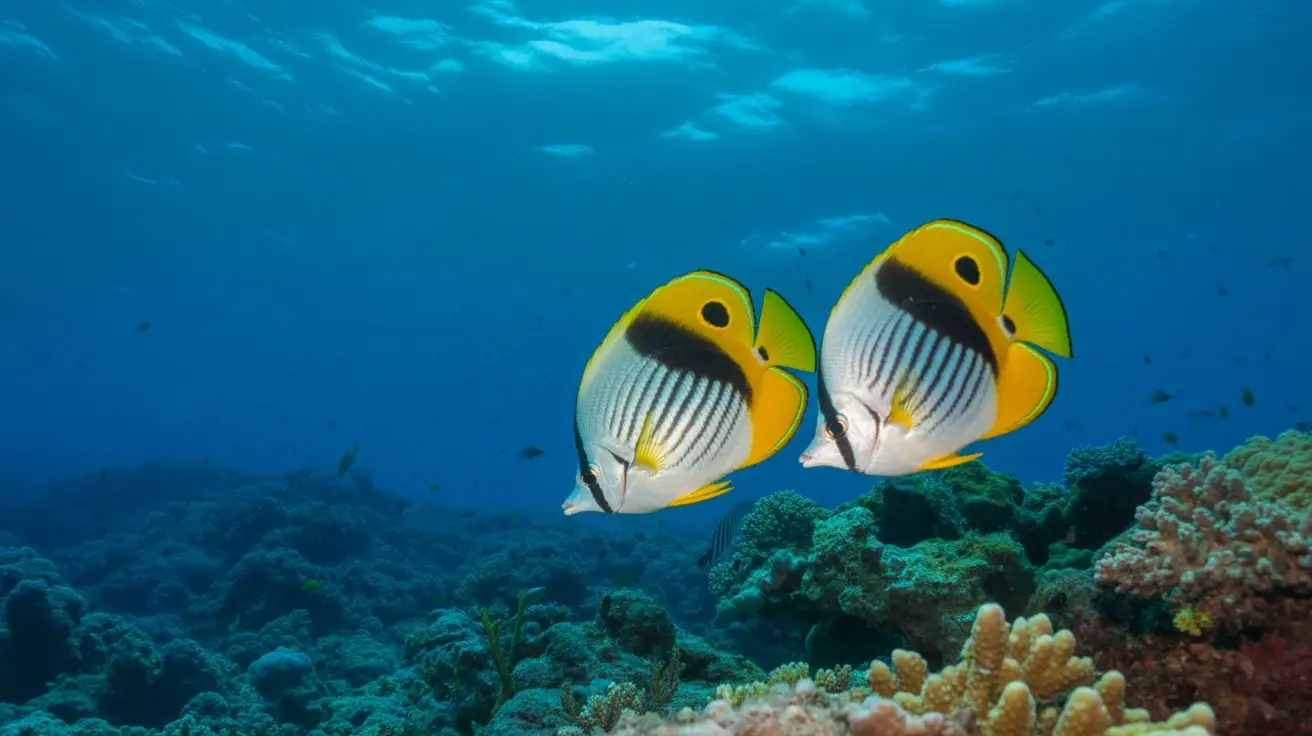
Coral reef ecosystems across tropical and subtropical waters serve as the primary habitat for 95% of butterflyfish species, with water temperatures ranging from 24-28°C providing ideal conditions for their physiological requirements.
You’ll find the highest species density in the Indo-Pacific region, where 85% of butterflyfish species occur. The Great Barrier Reef alone hosts 27 species, while the Red Sea contains 16 endemic species including Chaetodon fasciatus and C. larvatus.
You’ll observe distinct biogeographic patterns: Atlantic populations show lower diversity with only 13 species, mainly Chaetodon ocellatus and C. striatus.
Depth distribution varies greatly—you’ll encounter most species between 3-30 meters, though Roa modesta inhabits depths exceeding 150 meters on outer reef slopes. Additionally, the health of butterflyfish populations is closely linked to coral reef health, as these fish rely on coral habitats for shelter and food sources.
Feeding Behavior and Dietary Preferences
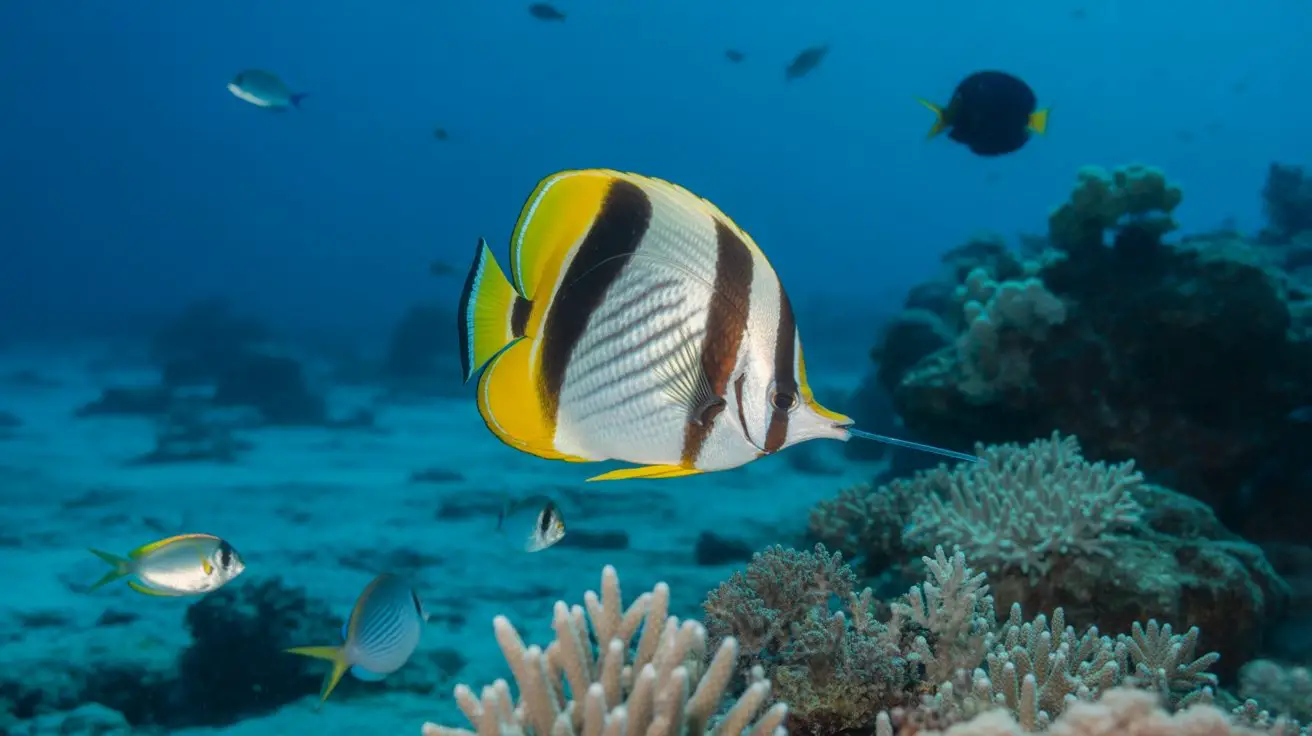
Most butterflyfish species exhibit highly specialized feeding behaviors that directly correlate with their evolutionary adaptations and ecological niches within reef ecosystems.
You’ll observe that corallivorous species like Chaetodon baronessa possess elongated snouts for extracting coral polyps, consuming up to 80% live coral tissue daily.
Planktivorous species such as C. lunulatus maintain higher swimming positions, feeding on zooplankton and small crustaceans.
You’ll find omnivorous varieties like C. auriga demonstrating opportunistic feeding patterns, incorporating algae, invertebrates, and detritus. Their feeding frequency ranges from 6-12 times hourly during daylight hours.
Territorial species defend feeding areas spanning 10-50 square meters, while schooling species exhibit cooperative foraging behaviors in open water columns. Additionally, butterflyfish play a crucial role in maintaining coral reef health by controlling algal growth and promoting the overall balance of marine ecosystems.
Reproduction and Life Cycle
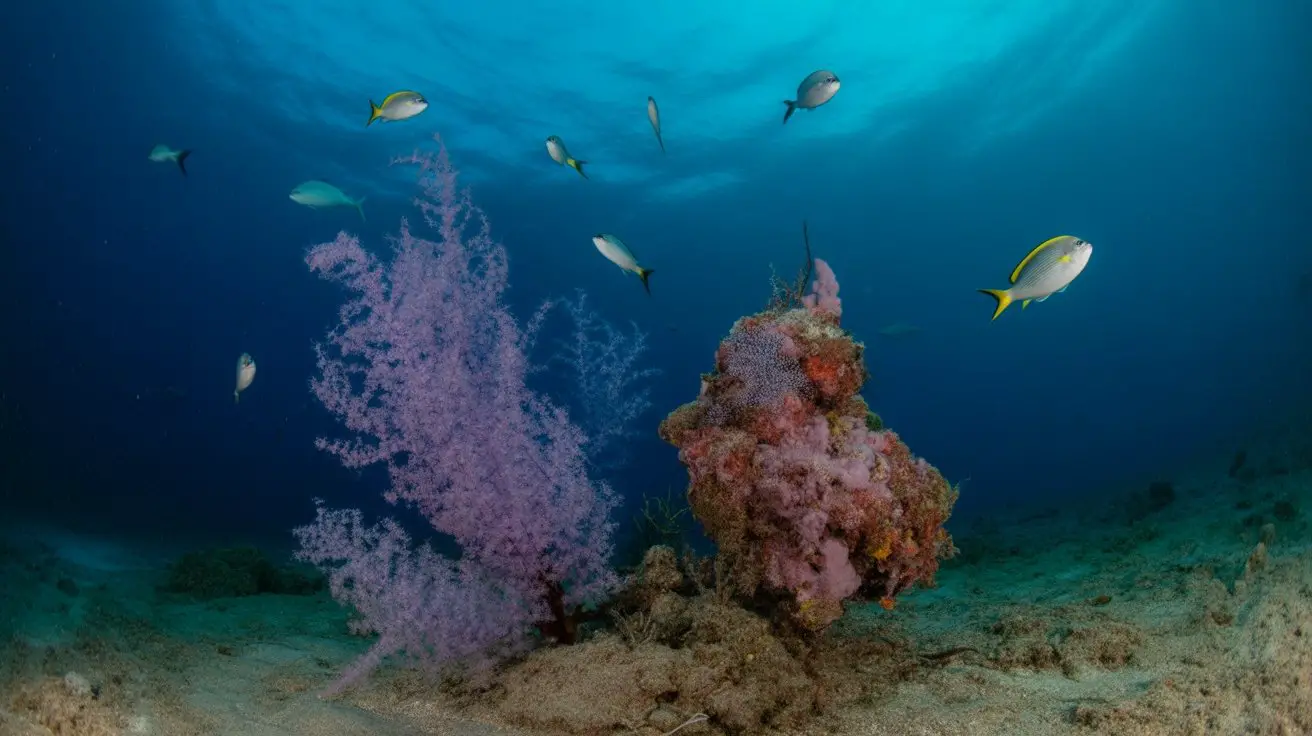
Butterflyfish reproductive strategies vary greatly across species, with most exhibiting distinct seasonal spawning patterns triggered by water temperature fluctuations and lunar cycles.
You’ll observe these teleosts releasing gametes into open water during peak reproductive periods, typically occurring between 26-28°C surface temperatures.
Their complex life cycle includes several critical developmental stages:
- Pelagic larval phase: Larvae drift 28-75 days in oceanic currents, developing distinctive bony plates called tholichthys.
- Settlement period: Juveniles recruit to reef systems at 12-20mm standard length.
- Sexual maturation: Most species reach reproductive capacity between 1-3 years.
- Spawning frequency: Pairs release 3,000-10,000 eggs during twilight hours every 4-10 days.
You’ll notice species like *Chaetodon lunula* demonstrate high site fidelity, returning to established spawning aggregation sites annually.
Social Structure and Territorial Behavior
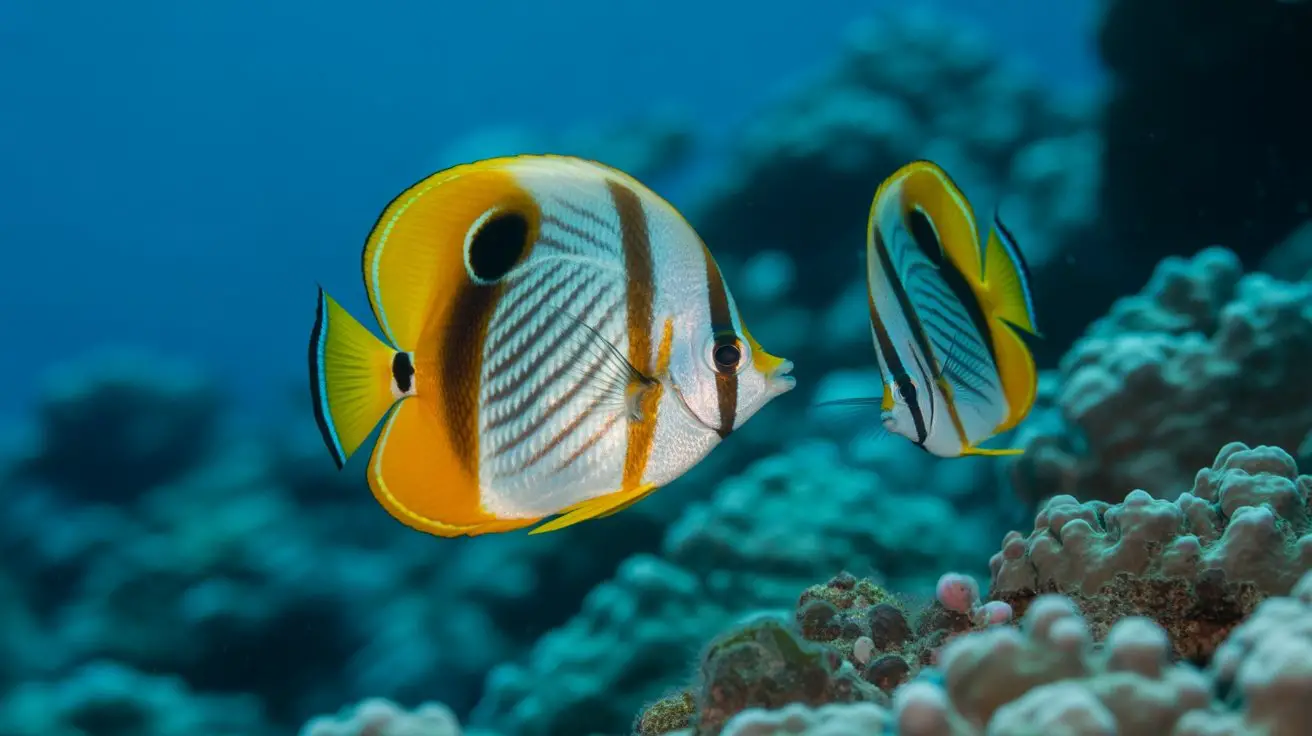
While reproductive behaviors unite butterflyfish seasonally, their daily social dynamics reveal remarkably diverse territorial strategies that directly influence feeding success and mate selection.
You’ll observe Chaetodon trifascialis defending 200-400m² territories containing specific coral polyp concentrations, while C. lunulatus exhibits flexible territorial boundaries expanding during peak feeding periods.
Pair-bonded species like C. baronessa maintain joint territories year-round, with partners coordinating defensive behaviors against intruders within 2-3 meters of each other.
You’ll notice schooling species such as C. semilarvatus forming hierarchical aggregations of 10-50 individuals, where dominant fish secure premium feeding sites.
Territorial aggression intensifies during dawn feeding periods, when you’ll witness chase frequencies increasing 300% compared to midday hours.
Size-matched conspecifics trigger the strongest defensive responses, lasting 15-45 seconds per encounter.
Ecological Role in Coral Reef Ecosystems
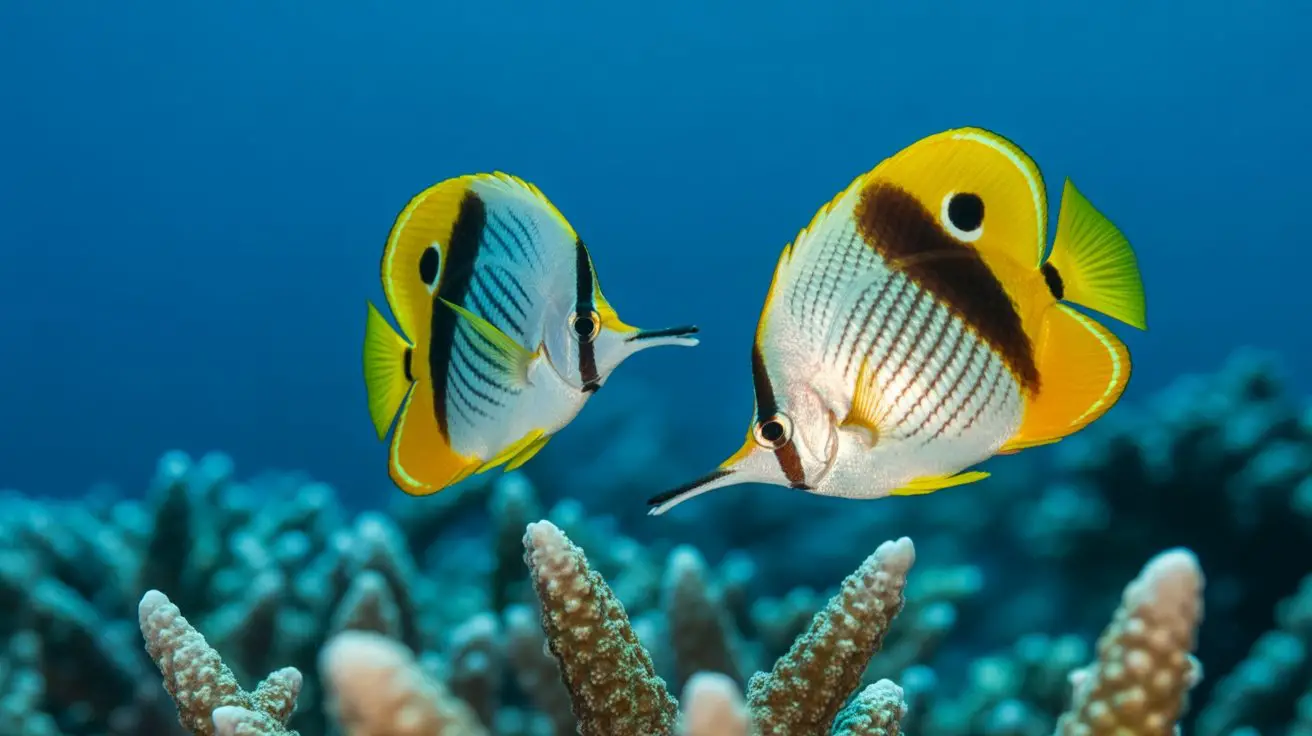
Beyond their intricate social behaviors, butterflyfish function as keystone species that regulate coral reef community structure through specialized feeding pressures and interspecific interactions.
You’ll observe these critical ecosystem functions when studying their feeding patterns:
- Coral polyp regulation: Chaetodon multicinctus maintains 15-20% coral mortality rates through selective corallivory, preventing dominant species monopolization.
- Algal grazing pressure: C. lunula removes 60-80g/m² of epilithic algae weekly, facilitating coral recruitment on cleared substrates.
- Invertebrate population control: C. ornatissimus consumes 200-300 polychaete worms daily, regulating benthic community composition.
- Nutrient cycling acceleration: Biomass turnover rates increase 35% through butterflyfish predation on small invertebrates.
Their specialized feeding behaviors create microhabitat heterogeneity, supporting biodiversity maintenance across reef zones through top-down trophic control mechanisms. Additionally, healthy predator populations, including butterflyfish, are essential for maintaining coral reef health and preventing overgrazing that can harm coral ecosystems.
Adaptations for Survival
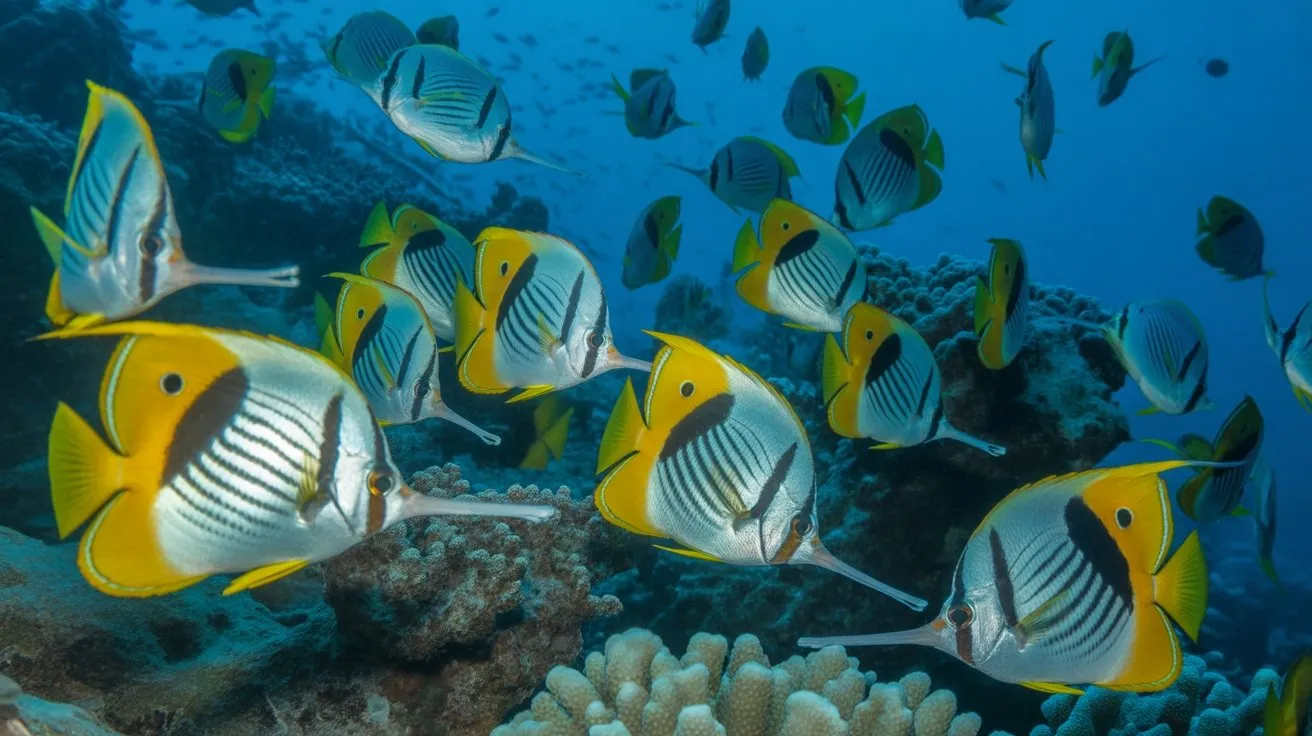
Although coral reefs present numerous predatory threats and environmental challenges, butterflyfish have evolved sophisticated morphological and behavioral adaptations that secure species persistence across diverse reef habitats.
You’ll observe that Chaetodon species possess compressed, disc-shaped bodies enabling rapid maneuverability through coral crevices during predator evasion. Their cryptic coloration patterns, including false eyespots on posterior regions, confuse predators about attack directionality.
Forceps-like elongated rostra in Forcipiger flavissimus facilitate extraction of invertebrate prey from tight coral spaces. You’ll notice schooling behaviors in Heniochus acuminatus reduce individual predation risk through dilution effects.
Specialized pharyngeal teeth process diverse food sources, from coral polyps to zooplankton. Territoriality in monogamous pairs, particularly Chaetodon trifascialis, secures resource access and reproductive success within established home ranges. Predators maintain balanced populations of prey species and promote natural behaviors, showcasing the intricate relationships within reef ecosystems.
Threats and Conservation Challenges
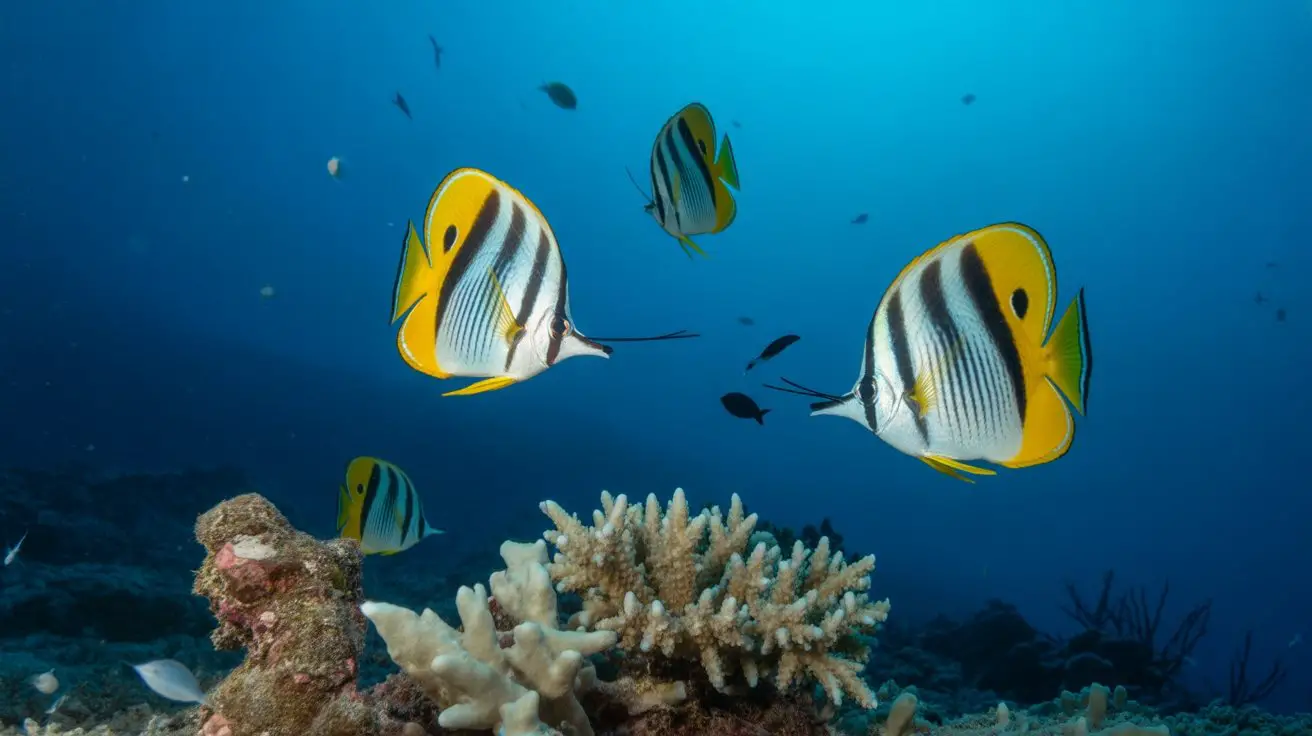
Despite their remarkable adaptations, butterflyfish populations face mounting anthropogenic pressures that threaten their long-term viability across Indo-Pacific reef systems.
You’ll observe Chaetodon species experiencing habitat degradation as coral bleaching events intensify, reducing available food sources and shelter. Climate-driven ocean acidification compromises their calcium carbonate reef environments, while rising temperatures push thermal tolerance limits.
Critical threats include:
- Coral bleaching: 50% population decline in Chaetodon trifascialis following 2016 mass bleaching
- Habitat destruction: Coastal development reducing shallow reef areas by 30% annually
- Overfishing: Removal of algae-grazing fish disrupts reef ecosystem balance
- Marine pollution: Microplastics and chemical runoff affecting reproductive success
You’ll notice obligate corallivores like Chaetodon baronessa showing greater vulnerability than generalist feeders, with localized extinctions documented across degraded reef systems throughout their range. Additionally, the loss of coral reefs significantly impacts marine biodiversity, as these ecosystems are home to a vast array of marine life.
Protection Efforts and Marine Sanctuary Initiatives
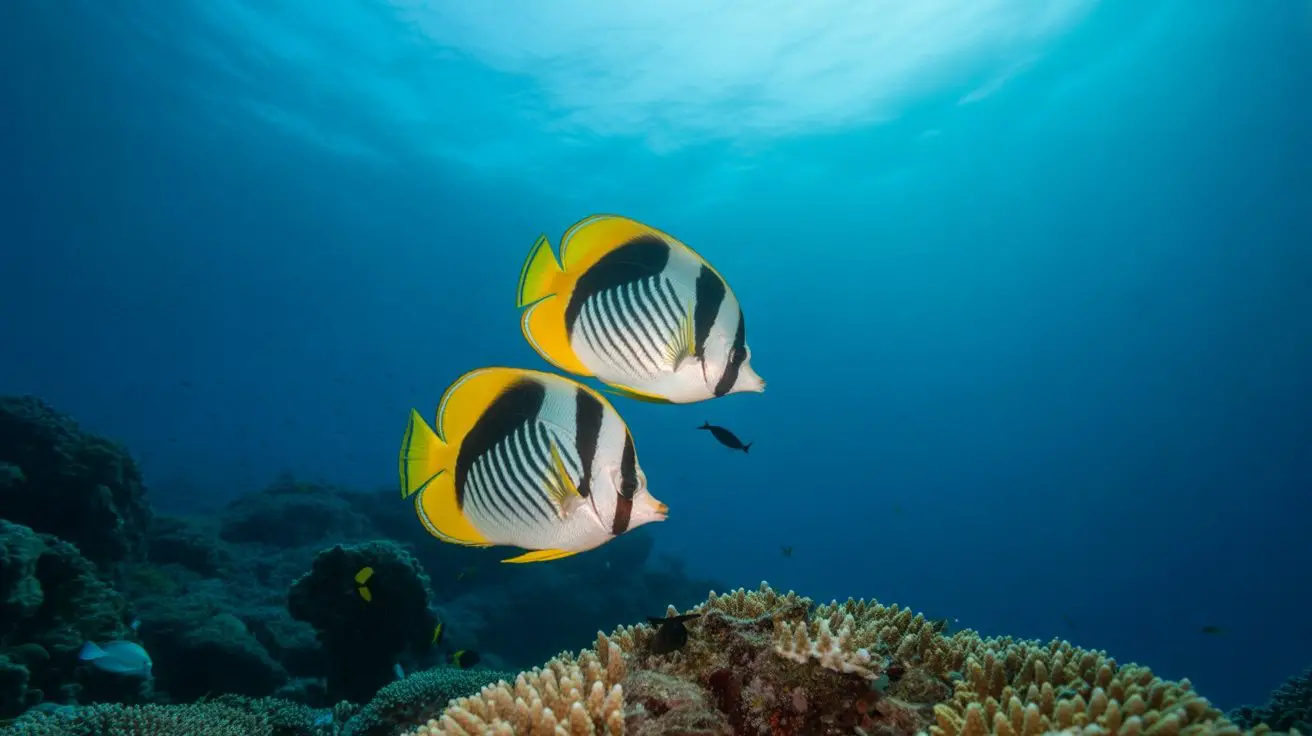
Recognizing the urgent need to protect butterflyfish populations, marine conservation organizations have established over 200 marine protected areas (MPAs) across the Indo-Pacific since 2010, with 15% specifically targeting Chaetodon habitat preservation.
You’ll find thorough protection protocols in sanctuaries like Australia’s Great Barrier Reef Marine Park, where no-take zones safeguard critical spawning aggregation sites for C. baronessa and C. lunulatus.
Hawaii’s Papahānaumokuākea encompasses 1.5 million square kilometers, protecting endemic C. multicinctus populations through strict fishing prohibitions.
These initiatives demonstrate measurable success: butterflyfish abundance increased 34% within established MPAs compared to unprotected reefs.
You’re witnessing coordinated international efforts including CITES appendix considerations and regional fisheries management, creating interconnected conservation networks essential for maintaining genetic diversity across butterflyfish metapopulations. Additionally, MPAs play a crucial role in marine ecosystem conservation, ensuring the sustainability of vital habitats that support diverse marine life.
Conclusion
You’re witnessing nature’s canaries in the coral mine—these Chaetodontidae species can’t survive when reef ecosystems collapse. As ocean temperatures rise 1.5°C above baseline, you’ll see 50% of Chaetodon populations vanish like delicate dancers abandoning their stage. Their specialized corallivorous feeding behavior makes them sentinel species; when you observe declining butterflyfish densities below 15 individuals per 500m², you’re seeing the reef’s death throes. They’re telling you the ocean’s most vibrant theaters are closing forever.
